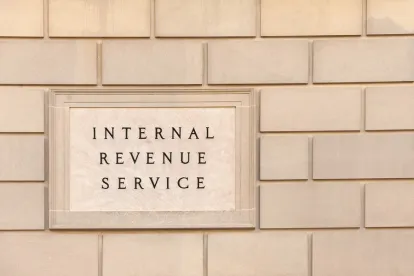As the IRS continues to churn out guidance on various forms of COVID-19 relief, this week is no exception with the release of Notice 2021-26. This Notice clarifies two key points relating to the tax treatment of dependent care assistance program (DCAP) benefits for 2021 and 2022.
We previously wrote about the optional increased annual limit ($10,500) for 2021 DCAP plan years. Questions remained about how to administer the increased annual limit, particularly given other relief allowing for increased carryover amounts and extended claims periods for DCAP benefits and whether taxable income would be incurred on amounts that carry over into the next taxable year.
Notice 2021-26 clarifies that (1) if DCAP benefits would have been excludable if used in a prior tax year, they remain excludable in 2021 and 2022, as applicable; and (2) carried over amounts and amounts subject to an extended claims period will not be considered when applying the annual DCAP maximum contribution limits for a subsequent plan year.
This sounds simple enough (and generally is for a calendar year plan). The Notice contains three examples of how this plays out in the real world, particularly for non-calendar year plans.
Example 1 deals with a calendar year plan, where an employee elects to contribute $5,000 to the DCAP for 2020 but incurs no dependent care expenses. Under current relief guidance, the employee may carry over $5,000 into the 2021 plan year (as long as the plan is amended to allow that carryover by the end of this year). The employee then elects to contribute $10,500 to the DCAP in 2021 (again assuming the employer elects to implement the higher limit for 2021). The employee incurs, and is reimbursed for, $15,500 in expenses during the 2021 plan year. Under the Notice, the full $15,500 is excludable from the employee’s 2021 taxable income.
Examples 2 and 3 address the administration of non-calendar year (i.e., July 1 to June 30) plans.
In Example 2, an employee elects to contribute $5,000 to the DCAP for 2020 but incurs no dependent care expenses. The employee may carry over $5,000 to the 2021 plan year. The employee then elects to contribute $10,500 to the DCAP for the 2021 plan year. The employee again incurs no dependent care expenses during 2021, leaving the employee with $15,500 in available benefits on January 1, 2022. For the 2022 tax year, only $10,000 is excludable from the employee’s income (i.e., $5,000 as an allowable carryover from the plan year beginning July 1, 2021, and $5,000 as a permitted contribution during the 2022 tax year). The remaining $5,500, plus any amount elected by the employee for the plan year beginning July 1, 2022, and used on or before December 31, 2022, can be reimbursed to the employee but will be taxable. The example also clarifies that this determination of the excludable amount during the 2022 taxable year does not change despite the DCAP’s 2-1/2 month carryover provision as applicable to the plan year beginning July 1, 2022 (which reverts back to the DCAP’s previous grace period deadlines that applied before the 2020 and 2021 extension periods are ended).
In Example 3, the employee does not participate in the DCAP in 2020. The employee elects to contribute $10,500 to the plan for a plan year beginning July 2, 2021. The employee incurs $5,000 in dependent care expenses from July 1, 2021, to December 31, 2021, which is excludable from income. As of January 1, 2022, the employee has the remaining $5,500 available, but only $5,000 is excludable during 2022, because $5,000 is the IRS-maximum permitted contribution limit for the 2022 tax year. The remaining $500 (plus any amount elected by the employee for the plan year beginning July 1, 2022, and used on or before December 31, 2022) can still be reimbursed to the employee but will be taxable.
With so many overlapping extension deadlines and varying IRS-mandated contribution limits that can come into play, DCAP plan administration may be more involved in the near term. Notably, the relief also does not address nondiscrimination testing issues or provide any relief for testing failures under Section 129 of the Internal Revenue Code, which have become more frequent given the ability to allow mid-year changes to elections in 2020, 2021, and 2022. Given the many moving pieces, DCAP administration will require more oversight and attention from employers.





 />i
/>i

